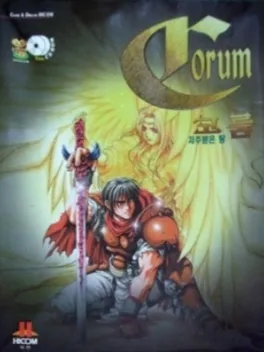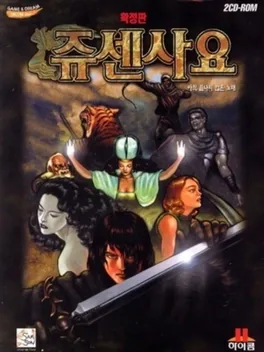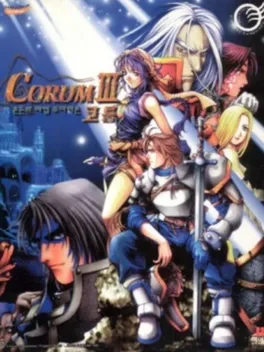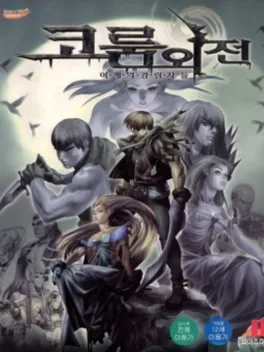Popular games published by company HiCom

With Corum, HiCom's internal Saver Team created what would become Korea's third most successful RPG series after The War of Genesis and Astonishia Story. A fact not that easy to understand when having a try at the series' first entry, as it feels quite unpolished. The story about a warrior that seeks revenge on the evil lord that has slaughtered his entire village is a beaten horse, but where the game falls flat the most is its action battle system. There's a severe lack of variety, as the hero only knows no offensive moves other than a standard combo and a dash attack. A block button is supposed to bring more depth to the fighting, but it puts the player in a worse situation more often than not, so a combination of evasion and button mashing is always more effective, the incredibly stupid AI takes care of the rest. Even the bosses seem ridiculously easy at first, that is until they switch into near-invincible mode, which requires hours of grinding to even be able to touch them at this state. There are also only three different weapon types, swords, halberds and (utterly useless) bows. Funny enough, there is a bar that recharges in between attacks and determines the strength of the next stroke, much like in Final Fantasy Adventure on the classic Game Boy.


A far superior sucessor that introduced many improvements, for example a battle system that actually made sense. On the other side stood incomprehensible changes, like the inability to run in towns and the restriction to saving points. Corum II was brought to Germany by budget publisher Software2000, but was widely dismissed by reviewers as a mediocre and misplaced console style RPG.

The final part of the trilogy makes the other two almost look like beta versions in comparison. To begin with, the story appears much less stereotypical than before. Three mythical sages seek to bring balance to the world by unleashing the power of an ancient magical artefact, the Jumarion. As they can't seize it themselves, they seek out the help of a mortal mage, who longed for the artifact all his life, and leaves a less than thrustworthy impression. Of all this the young knight Kaien knows nothing when he embarks on his pilgrimage. Rather he has to deal with a bunch of supersticious villainers and an alledgedly cursed little girl with a really strange personality... For the first time the prerendered graphics are rather good-looking, though they still appear sterile. The combat system has also been improved greatly and now stands nothing short of the greatest of beat 'em up-esque ARPGs like Terranigma or Story of Thor. Magic has never been a strength of the Corum series. Now some of the spells actually come in form of special moves that have to be executed during combos, making their usage much more natural. During the course of the game, Kaien gathers a party of three characters overall. Rather than fighting at the same time at his side, they're available to the player to switch in between them during the game. It goes without saying that each of them comes with their individual strengths and weaknesses. Unusual for action RPGs, Corum III comes with a network version. The three playable characters would have suited well for cooperative play, but instead the game offers several arena modes, as well as a dungeon rush. It is a nice extra, but amounts to little more than a gimmick in the end. The music is by far the best in the series as well. The game was originally released on three CDs, whith the last one entirely dedicated to the CD-audio sountrack. Did the first two games suffer from a rather small selection of songs available, Corum III got the right tune for every mood. Altogether, Corum III may be the best single player action RPG ever developed in Korea, and it was a loss for Germany that this was passed for a localization in favor of its still rather unpolished predecessor. This time Japan got more lucky, as Bothtec provided a translated version over there. The most funny and at the same time most sad thing is, Corum III actually made it to the US, yet hardly anyone ever got to play it there as the localization was handled by Gobe Software, then publisher of BeOS. Thus the game was only available for that not exactly widespread operating system.

The "Side Story" in the title already implies that this isn't an ordinary entry in the series, but the extend to which it did away with everything the popular series was known for came as quite a shock for its fans. In place of the standard medieval fantasy world now stood a semi-science fiction / cyberpunk setting a la Final Fantasy 7. But not only did the scenario have nothing to do with the former games, the genre was also dropped in favor of a turn-based SRPG, to try and mimick the success of Softmax' The War of Genesis series, which HiCom was also publishing at the time.